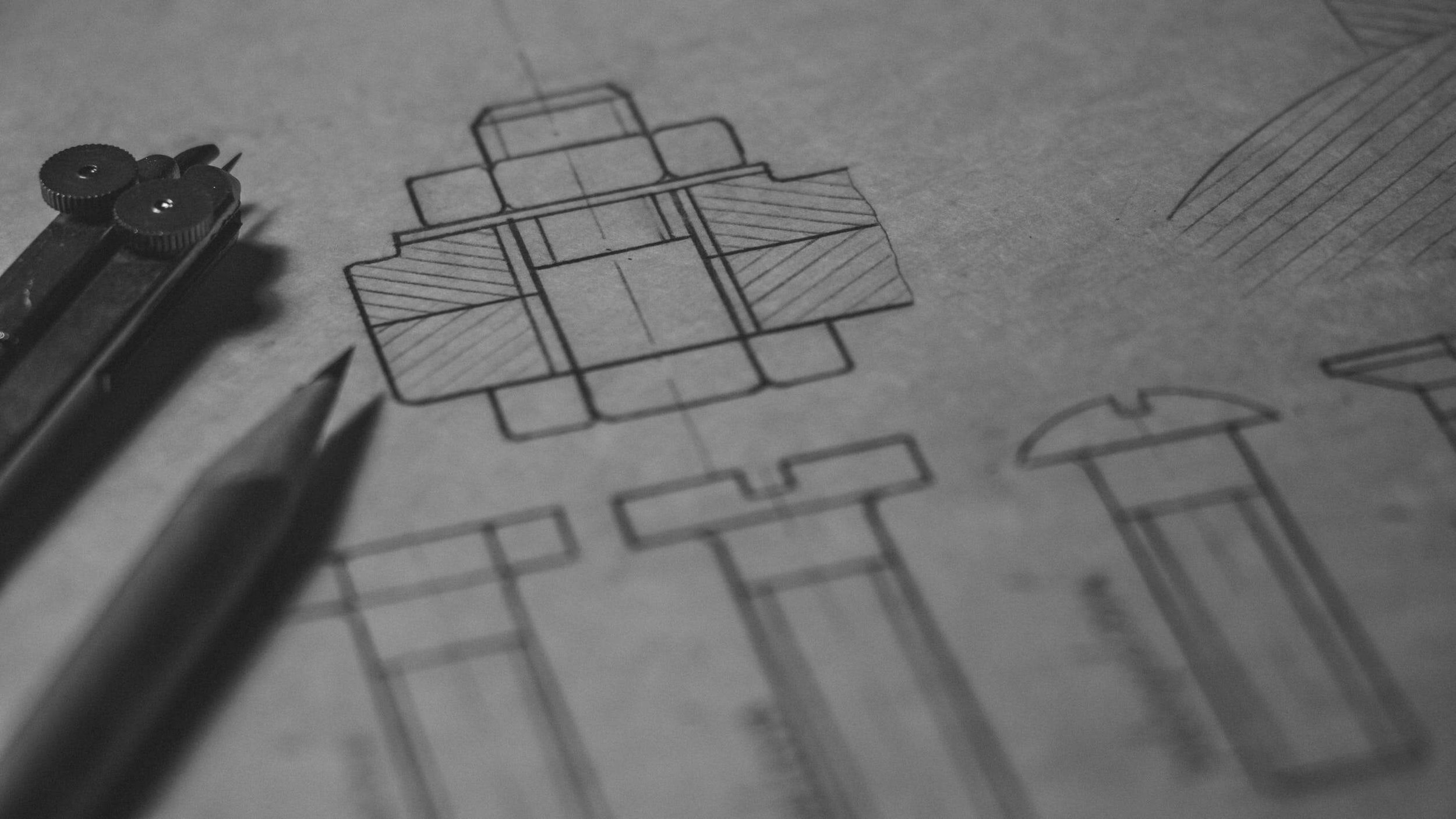
Knowledge Base for Product Owners
Dear Product Owner, the Werk24 knowledge base is written for you! The pages in the knowledge base are designed to achieve two things (i) give you an overview of the edge cases to consider when processing information from Technical Drawings, and (ii) explain which aspects can have a business impact.
Dear Developers, the Werk24 knowledge base sets out to explain some basic Mechanical Engineering principles that are helpful to understand when dealing with Information Extraction from Technical Drawings. For a more ‘technical’ discussion, please refer to our documentation.
-
PROJECTION METHODS
Projection Methods describe how the 3D object is projected onto the 2D drawing.
Different Markets use different methods (e.g., US vs EU).
Ignoring the Projection Method will result in ‘mirrored’, i.e., useless parts. -
MEASURES
Measures describe the ideal lengths, and the max. allowed deviation before the part becomes useless.
A multitude of different measurement and toleration system exist (we simplify the handling).
Ignoring tolerances will result in parts that ‘look’ correct but are useless (e.g., 2 parts will not fit together). -
THREADS
Thread readings contain much information e.g., diameter, length, angle, pitch, direction.
Many different standards are in use and interpreted by Werk24. Potentially your use-case even needs to differentiate between internal and external threads.
Ignoring the differences may result in accepting an order that cannot be fulfilled due to the lack of the required tool. -
GD&TS
Geometric Dimensioning and Tolerancing (GD&T) are tolerances in 3D. For example, they specify how the centers of two bores can differ.
Drawings with many tight GD&Ts are costly to manufacture. Ignoring this information will affect your profitability. -
EDGES
Often machined parts have sharp edges. The edge definition clarifies whether that’s acceptable or whether a post-processing step is required.
Ignoring the edge information will affect your quoting accuracy. -
SURFACE ROUGHNESSES
Many manufacturing processes how a speed - surface smoothness trade-off. Smooth surfaces require the machine to “go slower”.
Ignoring this information can affect your quoting accuracy. -
SYMBOLS
Symbols in technical drawings are graphical representations of various elements or features of a part, and they provide crucial data about the part size, shape, material, and other essential characteristics.
Ignoring symbols in drawings can lead to misinterpretation.
-
TITLE BLOCK
The Title Block contains the “Meta Data” of the drawing. For example, it tells us the number and name of the drawing.
You can leverage this information to improve the User Interaction. -
TOLERANCES
Tolerance is the range of allowable variation for a specific dimension. It is used to identify the important aspects of a part and ensure proper assembly.
Ignoring tolerance will add to problems in assembly and increase cost significantly.
-
RADII
Radii are measurements that are used to describe the curvature of surfaces, the rounding of edges, or the smoothness of corners. Sharp edges and corners can cause stress and can be difficult to produce, so it is commonly advised to add rounds and fillets to enhance the mechanical strength of the part.
Ignoring radius may lead to abrupt failure of the part.
-
NOTES
Notes on technical drawings include conventions and symbols unique to the drawing. It ensures the right interpretation of the drawing by the reader. There are two categories of Notes: Sectional Notes and Canvas Notes.
Ignoring the Notes may cause technical drawing misunderstanding.
-
PROCESSES
Processes are vital for efficient production and ensuring high-quality outcomes. With knowledge of processes, it is feasible to identify the optimal number of ways or group components for machine utilization.
Ignoring processes information may result in an increase in the complexity of future manufacturing workflow.
-
BENDS
Bend in sheet metal refers to the process of shaping metal by bending it using different operations. This involves changing flat metal into the desired shape by using dies. Technical drawings provide detailed information on all the necessary bends required for the sheet metal part.
Not paying attention to the bends can lead to important functional parts being left out, resulting in increased costs.
-
N-GRADES
N-Grades simplify and standardize surface roughness indication, benefiting manufacturers. Their use in technical drawings ensures consistent and accurate adherence to roughness requirements.
Neglecting N-Grades in technical drawings can cause confusion, errors, increased production costs, and delays.

